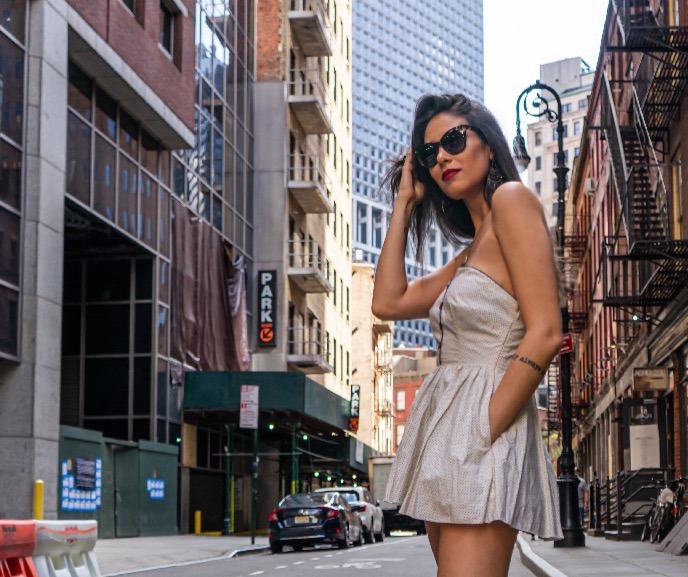INSIDE THE FASHION INDUSTRY - Fashion and Culture: The Responsibility Behind Social Narratives for Emerging Designers
- Barbara Sessim

- Nov 5
- 4 min read

I am going to start this blog post by thanking everyone who reached out to me and asked if my family is ok! Yes, everyone is good, thank God! And, even though I am not from Rio De Janeiro, I do have some family and friends there and Brazil is where I come from, so the subject is certainly touching and personal to me!
For everyone who is not aware of what is currently happening in Rio De Janeiro, for the past few weeks a large-scale police operation targeted the criminal group called Comando Vermelho in the favelas of Rio. According to official figures, at least 121 people died (including 4 police officers) as part of the action. The Guardian+5Reuters+5Al Jazeera+5. Thousands of residents and human-rights groups criticised the operation as excessively violent and called for independent investigations into possible abuses. The Guardian+2Reuters+2. Protesters in the targeted favelas marched demanding accountability and the resignation of the state governor. ABC News+1. Schools and businesses in the affected communities were shuttered, public transport disrupted, and civilians reported being caught in crossfire. rioonwatch.org+1
Now, what does this have to do with fashion? Well, after reading an Instagram post from a Brazilian influencer, Rener Oliveira (@reneroliveira), it seemed like this is something that needs to be addressed for all emerging designers trying to incorporate cultural diversity into their collections and, most importantly, their branding!
Fashion and culture have always been intertwined. Clothing is more than aesthetic, it reflects identities, histories, and the collective experiences of the communities that shape it. For this reason, many emerging designers look to cultural narratives and social issues as a source of inspiration. When done respectfully, this can create meaningful storytelling and emotional connection. However, the moment these themes are used superficially or without understanding, the result can shift from representation to exploitation.
In recent years, many brands have brought cultural elements and social issues into their marketing and creative direction. Yet the reality is that some of these narratives stem from places marked by economic disparities, systemic challenges, and sociopolitical tension. A clear example is the use of imagery from the favelas in Rio de Janeiro. These communities carry layers of cultural richness - music, dance, fashion, and community resilience - but they also reflect ongoing realities such as inequality and violence. When designers use these references simply to appear “urban,” “authentic,” or “edgy,” without acknowledging or engaging with the lived experience behind them, it risks reducing complex lives to aesthetic trends.
For emerging designers, this is particularly important. Unlike long-established brands, new labels are still shaping their reputation, audience trust, and identity. The way a brand handles cultural symbolism early on can define how it is perceived long term. If it feels opportunistic or disconnected from the communities it references, it can damage the brand’s credibility, even before it has fully developed.
Meaningful cultural storytelling requires more than visual cues. It requires presence and participation. If a brand wants to reference the culture of favelas, for example, it can:
Collaborate with local artists, musicians, photographers, and cultural leaders.
Invest in community-based initiatives, workshops, or educational programs.
Work with local production teams, collectives, or cultural organizations to create real economic impact.
Include voices from within the community in the design, research, and decision-making process.
The goal is not to speak about the culture, but to speak with it.
This approach not only ensures authenticity, it also demonstrates responsibility! Fashion becomes a platform for visibility, empowerment, and shared value, rather than a tool for extracting imagery for profit.
For designers, intentionality must lead the process:
Research the historical and social context behind your inspiration.
Engage the communities who shape the culture you are referencing.
Be transparent about your commitment to supporting cultural narratives beyond the campaign.
Approach collaborations as long-term relationships, not seasonal trends.
Because ultimately, how a designer integrates cultural and social narratives into their brand can build (or break) their identity. Consumers today are deeply aware and highly critical of brands that claim to care but do not demonstrate it through action. Authenticity is not something that can be styled, it must be lived, practiced, and invested in!
When cultural representation is handled with respect, partnership, and purpose, fashion becomes more than a product. It becomes a bridge between communities, a support system for cultural preservation, and a force for social awareness. And that is where design transcends aesthetics - it becomes meaningful.
Social issues in Brazil are always a touchy subject for me. I love New York City and cannot see myself living anywhere else in the world, but Brazil is still where I come from, where my dearest friends and family are! So it is obviously impossible to not feel upset about all social issues in the country. It just seemed like the perfect moment to clarify that cultural diversity and fashion do, indeed, walk side by side, however, there is a thin line between building a brand with purpose and focusing on profitability only! Like I mentioned before, consumers are deeply aware and highly critical of brands that claim to care but do not demonstrate it through action. Just look at how Gen Z had reshaped consumer behavior and rewrote the course of fast fashion, retail stores and production MOQs!
Building a brand with purpose is the main opening to building a solid brand community, customer loyalty and a long lasting business.
Again, to all who reached out to me, thank you!







Comments